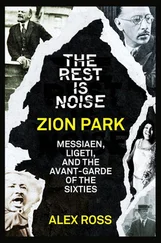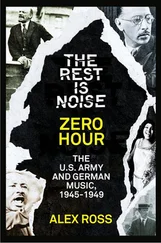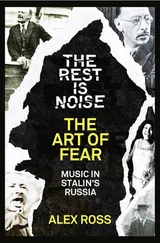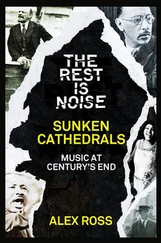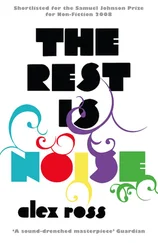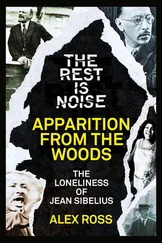The hall closed after two seasons; local phone customers complained that the Telharmonium was disrupting their calls. But the future had been glimpsed. The electrification of music would forever change the world in which Mahler and Strauss came of age, bringing classical music to unprecedented mass audiences but also publicizing popular genres that would challenge composers’ long-standing cultural hegemony. Even in 1906, ragtime numbers and other syncopated dances were thriving on the new medium. Small bands made a crisp, vital sound, while symphony orchestras came across as tinny and feeble.
What classical music in America lacked was American classical music. Composition remained in the condition of cultural subservience that Ralph Waldo Emerson had diagnosed in his essay “The American Scholar” back in 1837: “We have listened too long to the courtly muses of Europe.” American writers answered Emerson’s call: by the turn of the century, libraries contained the works of Hawthorne, Melville, Emerson, Thoreau, Poe, Whitman, Dickinson, Twain, and the brothers James. The roster of American composers, on the other hand, included the likes of John Knowles Paine, Horatio Parker, George Whitefield Chadwick, and Edward MacDowell—skilled craftsmen who did credit to their European training but who failed to find a language that was either singularly American or singularly their own. Audiences saved their deepest genuflections for European figures who deigned to cross the Atlantic.
Strauss came to America in 1904. Notwithstanding his mildly dangerous aura—the American critic James Huneker labeled him an “anarch of art”—he was greeted almost as a head of state. Theodore Roosevelt received him at the White House, and Senator Stephen B. Elkins, a powerful operator in the pro-business Republican Party, invited him onto the floor of the Senate. In return, Strauss granted America the honor of hosting the premiere of his latest work, the Symphonia domestica. The program stirred controversy: it described a day in the life of a well-to-do family, including breakfast, the baby’s bath, and connubial bliss. Despite some extended patches of note-spinning, the new work gave vigorous expression to Strauss’s belief that anything could be set to music as long as it was felt intensely. Schopenhauer, in The World as Will and Representation, observed that music could find as much pathos in the disagreements of an ordinary house hold as in the agonies of the house of Agamemnon. There in one sentence was Strauss’s career from Domestica to Elektra.
Demand for Strauss in New York grew so strong that two additional orchestral performances were arranged. They took place on the fourth floor of Wanamaker’s department store, which was one of the original American superstores, occupying two blocks along Broadway between Eighth and Tenth streets. Wanamaker’s felt that it had a duty to provide cultural uplift: its piano showroom, like Carnegie Hall uptown, regularly featured recitals by celebrated artists. “They do things sumptuously at the Wanamaker store,” the Times wrote of the first Strauss concert. “There was, of course, an eager desire on the part of many people to hear the great German composer conduct his own compositions, and though there were fully five thousand people accommodated at the concerts last evening, there were many applicants who had to be refused, and every inch of space was occupied, many people standing.” In the European press, however, Strauss was promptly pilloried as a moneygrubbing vulgarian who so desperately wanted to add to his coffers that he performed in supermarkets.
The Symphonia domestica entertained Manhattanites; Salome scandalized them. When the Metropolitan Opera presented the latter work in January 1907, there was a kerfuffle in the Golden Horse shoe, as the elite ring of boxes was known. Boxes 27 and 29 emptied out before the scene of the kissing of the head. J. P. Morgan’s daughter allegedly asked her father to shut down the production; Salome did not return to the Met until 1934. A physician vented his disgust in a letter to the New York Times:
I am a man of middle life, who has devoted upward of twenty years to the practice of a profession that necessitates, in the treatment of nervous and mental diseases, a daily intimacy with degenerates … I say after deliberation, and a familiarity with the emotional productions of Oscar Wilde and Richard Strauss, that Salome is a detailed and explicit exposition of the most horrible, disgusting, revolting and unmentionable features of degeneracy (using the word now in its customary social, sexual significance) that I have ever heard, read of, or imagined … That which it depicts is naught else than the motive of the indescribable acts of Jack the Ripper.
The greater part of the audience couldn’t turn away. One critic reported that the spectacle filled him with “indefinable dread.”
Giacomo Puccini arrived for his first American visit just a few days before the Salome affair. When his ship was trapped for a day in a fogbank off Sandy Hook, bulletins of his progress went out to opera-loving readers of the New York Times. Puccini’s operas had lately become runaway hits in the city; during his five-week stay, all four of his mature works to date—Manon Lescaut, La Bohème, Tosca, and Madama Butterfly—played at the Metropolitan Opera, and La Bohème ran concurrently at Oscar Hammerstein’s Manhattan Opera House.
Puccini was keen to write something for his American fans, and in the customary shipside press conference he floated the idea of an opera set in the Wild West. “I have read Bret Harte’s novels,” he said, “and I think there is great scope in your Western life for operatic treatment.” He also looked into African-American music, or “coon songs,” as the Times called them. Black musicians were summoned to the home of Dr. and Mrs. William Tillinghast Bull, so that the maestro could hear them.
Puccini returned to Italy with the plan of making an opera out of The Girl of the Golden West, by the playwright-showman David Belasco, who had also written the play on which Butterfly was based. The score branched out in a couple of new directions. On the one hand, Puccini demonstrated what he had absorbed from several encounters with Salome, as well as from a study of Debussy. Act I begins with blaring whole-tone chords, which must have alarmed the hordes who had fallen for La Bohème. Act II culminates in a “tritone complex” of the kind that had often appeared at climactic moments of Salome and Elektra—chords of E-flat minor and A minor in minatory alternation. At the same time, The Girl of the Golden West gamely tries to do justice to its classic American setting; intermittent strains of the cakewalk echo whatever it was that Puccini heard at Dr. and Mrs. Bull’s, while a Native American Zuni song furnishes material for (oddly) an aria by a black minstrel. The most remarkable thing about the work is that a fearless, independent woman occupies the center of it; in an age when women in opera almost invariably came off as diseased and deranged, Puccini’s Minnie is a bringer of peace, a beacon in a darkening world.
Mahler arrived in New York on December 21, 1907, taking up residence at the Hotel Majestic on Central Park West. His performances at the Met went splendidly, but trouble was brewing behind the scenes. Heinrich Conried, who had hired Mahler, was forced out, partly because of the Salome debacle, and the board expressed a desire to “work away from the German atmosphere and the Jew.” Giulio Gatti-Casazza, of La Scala, became the new manager, bringing with him the firebrand conductor Arturo Toscanini. But another opportunity arose. The society figure Mary Sheldon offered to set Mahler up with a star orchestra, and the New York Philharmonic was reconstituted to meet his needs. Mahler believed that this arrangement would allow him to present his own works and the classics under ideal conditions. “Since [New Yorkers] are completely unprejudiced,” he wrote home, “I hope I shall here find fertile ground for my works and thus a spiritual home, something that, for all the sensationalism, I should never be able to achieve in Europe.”
Читать дальше

